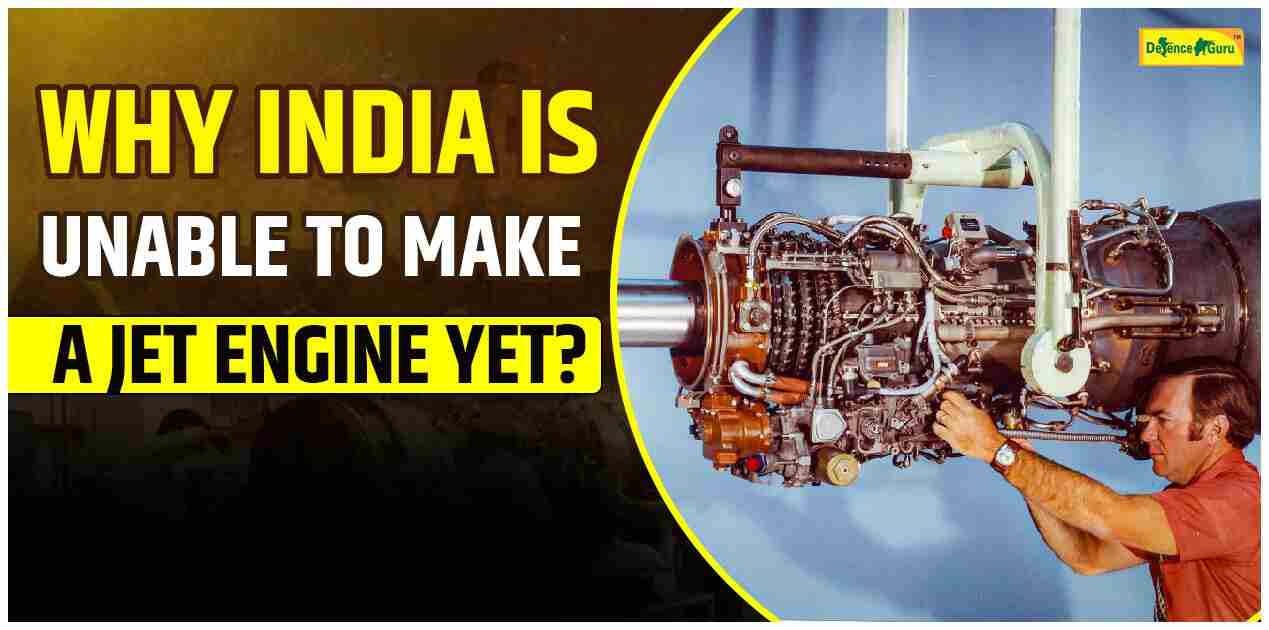Jet engines are among the most sophisticated technological advancements in modern aerospace engineering. The power military fighter jets, commercial airliners, and unmanned aerial vehicles, serving as the backbone of a nation's air superiority. Despite India's significant advancements in space technology, missile development, and indigenous fighter aircraft production, it has struggled to develop a fully operational indigenous jet engine. While India has attempted to create a jet engine through projects like the Kaveri engine, these efforts have yet to meet the stringent requirements of modern fighter aircraft. This article explores the reasons behind India's challenges in jet engine development and the ongoing efforts to overcome them.
1. The Intricacy of Jet Engine Technology
Developing a jet engine is one of the most challenging feats in aerospace engineering. It involves mastery over several complex disciplines, including aerodynamics, thermodynamics, fluid mechanics, metallurgy, and precision manufacturing. Jet engines operate at extreme temperatures and pressures, demanding a combination of high-strength materials, efficient cooling mechanisms, and advanced combustion technologies.
Only a handful of countries—the United States, the United Kingdom, Russia, France, and China—have successfully mastered the art of developing and producing high-performance jet engines. These nations have invested heavily in research and development (R&D) over several decades, gaining invaluable expertise that India still lacks.
2. The Challenge of Advanced Materials and Metallurgy
One of the most significant hurdles in developing an indigenous jet engine is the requirement for specialized materials that can withstand the extreme conditions inside the engine. Fighter jet engines operate at temperatures exceeding 1,500°C, requiring the use of high-performance nickel-based super alloys, ceramic composites, and single-crystal turbine blades.
India has made progress in metallurgy, but it still faces challenges in producing single-crystal turbine blades, which are crucial for the efficiency and longevity of jet engines. The manufacturing of these blades involves advanced casting techniques, precise cooling systems, and proprietary coating materials, technologies that remain closely guarded by leading jet engine manufacturers such as Rolls-Royce, GE Aviation, and Safran.
3. Lack of a Strong Aerospace Industrial Ecosystem
Countries that have successfully developed jet engines possess a robust ecosystem of research institutions, aerospace companies, and specialized suppliers. India’s aerospace sector, while growing, still lags behind in terms of infrastructure and expertise.
A jet engine comprises thousands of intricate components, each requiring high precision manufacturing. India currently lacks the industrial base and supply chain to produce many of these critical components domestically. As a result, it has to rely on foreign imports for essential parts, slowing down the progress of indigenous engine development.
4. The Failure of the Kaveri Engine Project
India’s primary attempt at developing a jet engine, the Kaveri engine, was initiated in the 1980s by the Gas Turbine Research Establishment (GTRE) under the Defence Research and Development Organization (DRDO). The objective was to power the HAL Tejas fighter aircraft. However, the Kaveri engine has been plagued with numerous challenges:
- Insufficient thrust: The engine failed to meet the required thrust-to-weight ratio needed for modern fighter jets.
- Weight issues: The engine was heavier than its global counterparts.
- Reliability concerns: The engine suffered from overheating and durability problems.
- Inability to meet international fighter jet standards: It could not match the performance of foreign alternatives like the General Electric F404 and F414 engines used in the Tejas fighter.
Due to these shortcomings, the Kaveri engine was eventually dropped from the Tejas program. However, DRDO continues to work on the engine for potential use in unmanned aerial vehicles (UAVs) and future fighter programs.
5. Dependence on Foreign Engines
Given the delays and setbacks in indigenous jet engine development, India has had to rely on foreign engines for its fighter aircraft. Some of the key engines currently in use include:
- General Electric F404 & F414 – Used in HAL Tejas Mk1 and Mk2.
- Klimov RD-33 – Powers the MiG-29 fighter jets.
- Saturn AL-31FP – Used in the Su-30MKI aircraft.
This dependence on foreign engines means that India has limited control over its defence technology, making it vulnerable to supply chain disruptions and geopolitical pressures.
6. High Cost and Long Development Time
Developing a high-performance jet engine requires an enormous investment, often amounting to billions of dollars over decades. Countries that have successfully developed jet engines have consistently invested in R&D for decades, ensuring a continuous cycle of innovation.
India’s defence budget has prioritized other urgent needs, such as aircraft procurement and missile development, leaving limited funding for jet engine R&D. Additionally; projects like the Kaveri engine have faced frequent budgetary constraints and policy inconsistencies, further delaying progress.
7. International Restrictions and Technology Transfer Challenges
One of the significant roadblocks to India’s jet engine development is the reluctance of foreign nations to share critical engine technologies.
The United States and other countries maintain strict regulations under frameworks such as the International Traffic in Arms Regulations (ITAR), which restrict the export of sensitive defence technologies. Even close defence partners like Russia and France have been hesitant to transfer core jet engine technologies to India.
Although India has entered into partnerships with companies like Safran (France) and General Electric (USA), these collaborations have focused more on licensed production rather than full technology transfer, limiting India’s ability to develop its own jet engines.
8. On-going Efforts to Overcome These Challenges
Despite the setbacks, India is making progress in addressing these challenges. Some of the key initiatives include:
- Collaboration with France’s Safran: India is in discussions with Safran for joint development of a next-generation fighter jet engine for the Advanced Medium Combat Aircraft (AMCA) program.
- GE-HAL Partnership: In 2023, India signed an agreement with General Electric to locally manufacture the F414 engine for the Tejas Mk2 fighter.
- Investment in Advanced Materials: Indian research institutions and industries are working on indigenous single-crystal blade technology and advanced metallurgy.
- Development of a New Indigenous Jet Engine: DRDO is exploring a new indigenous engine project for future fighter aircraft, learning from the Kaveri program's failures.
Conclusion
India’s inability to develop a jet engine stems from multiple challenges, including technological complexity, lack of an industrial ecosystem, metallurgy constraints, reliance on foreign engines, and funding limitations. However, the country is taking significant steps toward overcoming these hurdles.
With sustained investment, strategic partnerships, and continued focus on R&D, India has the potential to develop its own world-class fighter jet engine in the coming decade. Success in this area would not only enhance India’s defence self-reliance but also position it as a global player in aerospace technology.
Read more:
List of Aircrafts Owned by India- Defence Guru
20 Questions With Answers on Aircraft, Asked in AFSB Interview.


.jpg)





0 Comments